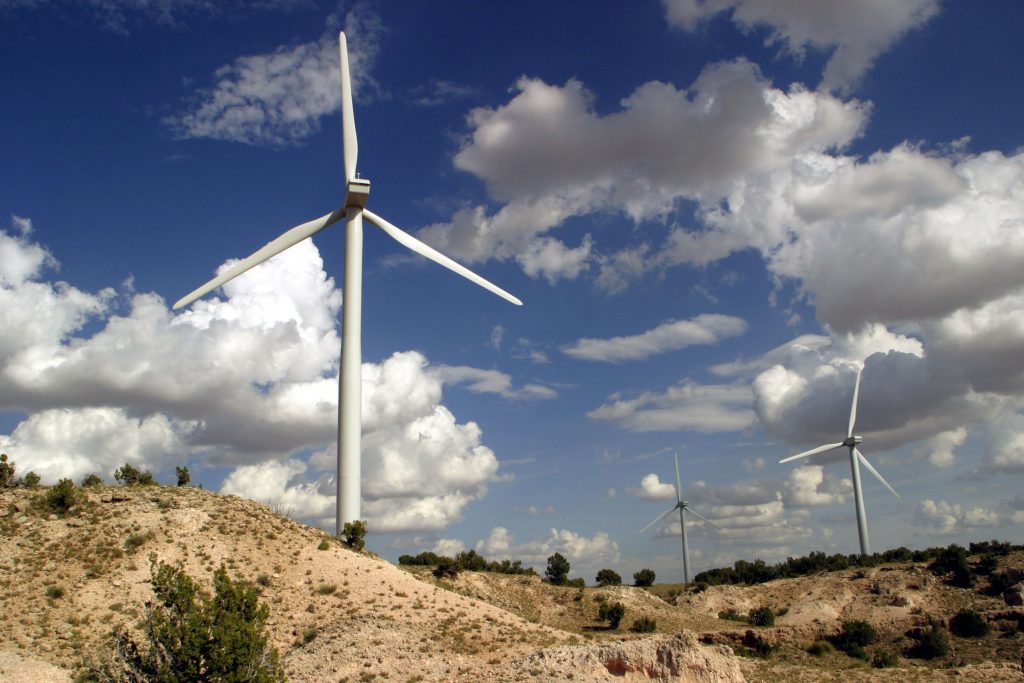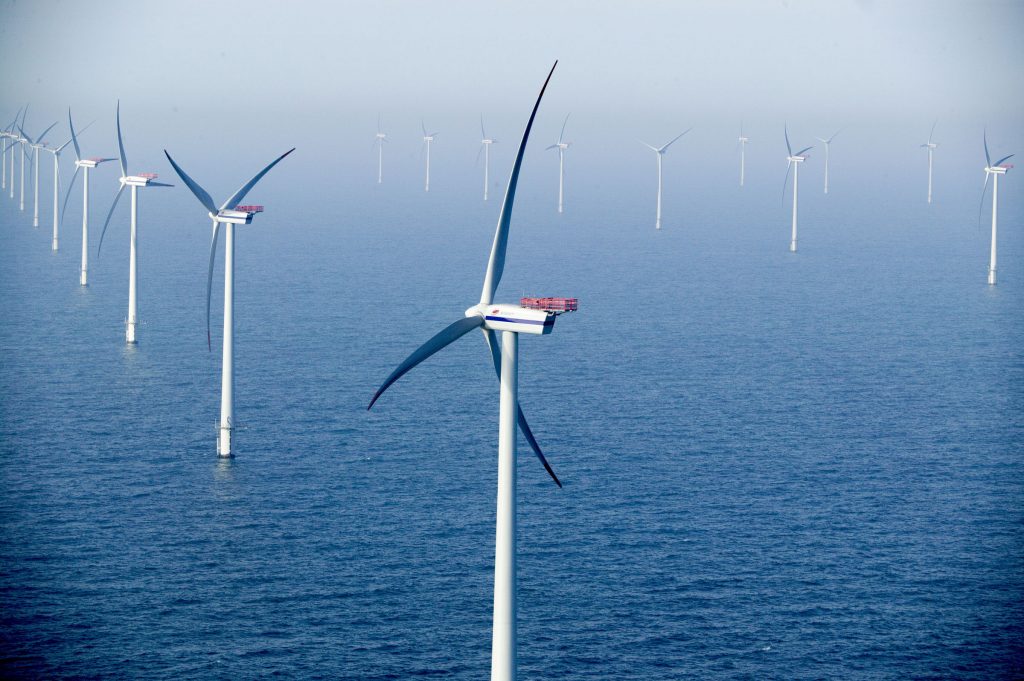
ALBUQUERQUE, N.M. As the popularity of wind energy rapidly grows worldwide, researchers at the Department of Energy’s Sandia National Laboratories are developing ways to lower the cost of this alternative energy and enable turbines to produce more power.
Current wind turbines are cost effective in very windy sites. The goal of the DOE wind program is to extend that cost effectiveness to convenient sites that are not as windy. This can be done by making the rotor swept area larger and slowing the rotation rate down.
“We are looking at methods of building larger, stronger blades for turbines using a hybrid of carbon graphite fibers and fiberglass that sweep a greater area without greater cost,” says Paul Veers, manager of Sandia’s Wind Energy Technology Department. “By next summer we expect to have experimental blades ready for testing that we believe will be lighter and stiffer than blades currently used in the industry.”
Sandia has been researching wind energy since the 1970s, but it’s only now that the alternative energy source has become economical enough to find widespread use. Over the past ten years the cost of wind energy has fallen dramatically — to 2.5-5 cents a kilowatt-hour in the most windy sites. However, further cost reductions are necessary in critical subcomponents in design, manufacturing, and system integration, Veers says, to make turbine cost effective in sites with modest winds.
Wind farms — fields of wind turbines — can be found in California, Southwest Texas, Minnesota, the Washington-Oregon border, Iowa, West Virginia, Pennsylvania, and several other states. A newly developed wind farm recently began operations at a Public Service Company of New Mexico Wind Energy Center near Fort Sumner. N.M.
Veers says that in Europe, where wind energy has become particularly popular, turbine manufacturers are starting to produce very large machines. They are frequently used for offshore applications where winds are steady and strong.

“However, as machines have grown larger, issues of scaling and loads have made detailed engineering even more important,” Veers says.
That’s where Sandia comes in — researching how to overcome some of these issues.
Today, the most popular commercial wind turbines have 35-meter blades on towers that are 65 to 80 meters tall. They produce about 1.5 megawatts each, and the blades are primarily made of fiberglass, although at least one European manufacturer uses wood.
Tom Ashwill, who leads the blade development team, says that the research blades will be built at sub-scale sizes of nine to ten meters in order for the researchers to cost-effectively grapple with issues such as fiber material form (i.e. stitched or woven), degree of carbon/glass hybridization, manufacturability — vacuum-assisted resin transfer molding or pre-preg and other traditional issues like aerodynamics, structural strength, and reliability. It is expected that qualities of successfully tested subscale blades can be scaled up to carbon/glass blades 50 meters long that would reside on turbines with 100-meter towers and that produce 2 to 5 megawatts each.
Sandia is concurrently working with industry, both manufacturers and designers, to bring the findings of these subscale blade studies up to full-scale application in commercial prototypes. Public-private partnerships are being funded through the DOE Low Wind Speed Turbine program.
By next summer the researchers hope to have six to 12 different blades to test at the National Wind Technology Center near Boulder, Colo., using its large blade test facilities, and at the Department of Agriculture’s research station in Bushland, Texas, using three experimental turbines.
“We expect over the next few months to make some real inroads to developing better blades for turbines,” Ashwill said. “It’s a project we are all looking forward to.”
Additional links about wind energy:
- Aeroelastic tailoring expected to increase life of blades
- New Mexico Wind Energy Center to open this fall
Sandia technical contact: Tom Ashwill, tdashwi@sandia.gov , (505) 845-8457

